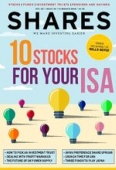Archived article
Please note that tax, investment, pension and ISA rules can change and the information and any views contained in this article may now be inaccurate.
How to deal with profit warnings

The number of UK-listed companies issuing a profit warning hit a two year high in the final quarter of 2017 with 81 offenders, according to consultant EY. And the profit warnings keep coming in 2018.
Investors must accept that profit warnings come with the territory when putting money into equities. You’ll probably experience the pain associated with them at some point in your investing life.
The best advice is not to panic and to try and work out if problems can be fixed. If they can’t, you may have to consider selling out, even if it means incurring a loss.
NOT ALWAYS PREDICTABLE
Sometimes you’ll get hints that life isn’t going well, effectively laying the ground work for a profit warning. Other times they come out of the blue and can cause serious pain to the share price.
Restaurateur Fulham Shore (FUL:AIM) last week issued a profit warning which said fewer people were coming to its suburban London sites. Its shares had already been in a falling trend for more than a month before the warning as other restaurant operators experienced problems.
More shocking was the 8 March warning from drinks distributor-to-retailer Conviviality (CVR:AIM). A material error in its financial forecasting accounted for £5.2m of a £14m
EBITDA guided downgrade. It also suffered weak margins in its wholesale business.
The former was caused by a spreadsheet error, according to its nominated adviser Investec. That’s a huge embarrassment for the business. The other problem was thought to be linked to Conviviality’s decision to give too much margin away in listing fees and promotional offers.
Investec says the warning has highlighted process and control issues in the business, which management believes it has now addressed.
It is hard in such a situation to trust the management until there is evidence that controls have been tightened. If you were to wait for more positive signs, it would mean holding on to the shares during a period of uncertainty which could potentially exacerbate any losses if the stock keeps falling in value.
Indeed, the company’s shares were suspended on 14 March after it found another problem. Conviviality had failed to include a £30m tax payment in its cash flow projections.
INSIGHTFUL RESEARCH
Financial data provider Stockopedia in 2016 analysed three years’ worth of smaller company profit warnings on the UK stock market. On average it found prices began falling by 6% in the six months before the warning; they fell by 19.2% on the day of the warning; and there was further share price weakness for two to three months after the warning. It found no significant reversal in the price decline 12 months after a warning.
Many investors will hold on to shares in a troubled company in the hope they will recoup some of their losses. Some observers say that’s a bad strategy as there are elevated risks of owning a company that has issued a profit warning – i.e. will there be another warning?
AIM superstars BooHoo.com (BOO:AIM) and Keywords Studios (KWS:AIM) both issued profit warnings soon after joining the stock market. However if you’d sold those stocks after the warnings, you would have missed out on 718% and 1,275% gains respectively since the closing price on the day of each warning.
There isn’t a one-size-fits-all approach to dealing with profit warnings. But the worst thing to do is to ignore them and hope everything will turn out fine. (DC)
Important information:
These articles are provided by Shares magazine which is published by AJ Bell Media, a part of AJ Bell. Shares is not written by AJ Bell.
Shares is provided for your general information and use and is not a personal recommendation to invest. It is not intended to be relied upon by you in making or not making any investment decisions. The investments referred to in these articles will not be suitable for all investors. If in doubt please seek appropriate independent financial advice.
Investors acting on the information in these articles do so at their own risk and AJ Bell Media and its staff do not accept liability for losses suffered by investors as a result of their investment decisions.
Issue contents
Big News
- AJ Bell customers given priority access to company’s IPO share offer
- An increasing number of investment trust dividend heroes
- Spring Statement reveals (slightly) improved economic picture
- Gem Diamonds is on a roll with high quality discoveries
- Time is running out for GKN shareholders to vote on Melrose takeover offer
- Labour strike risk could lead to higher copper price
- Why is the dollar struggling?
- Big fall in London house prices
- Aviva under fire for plan to cancel high-yielding shares

 magazine
magazine








